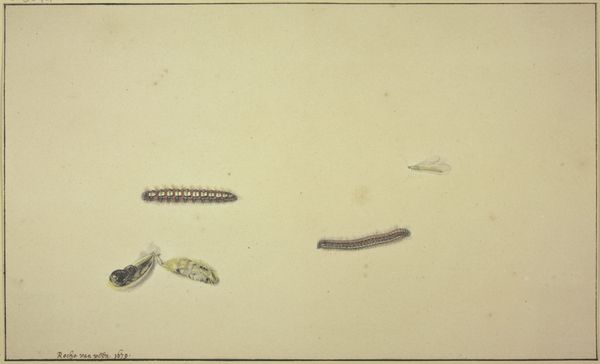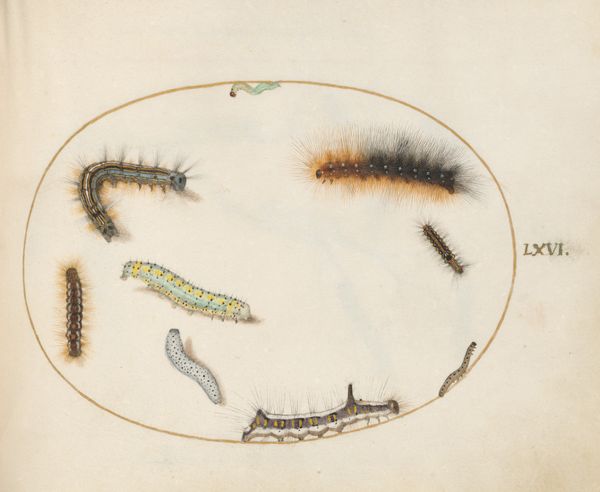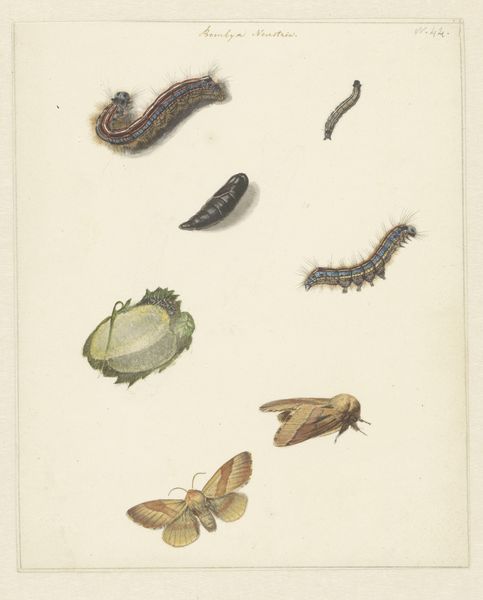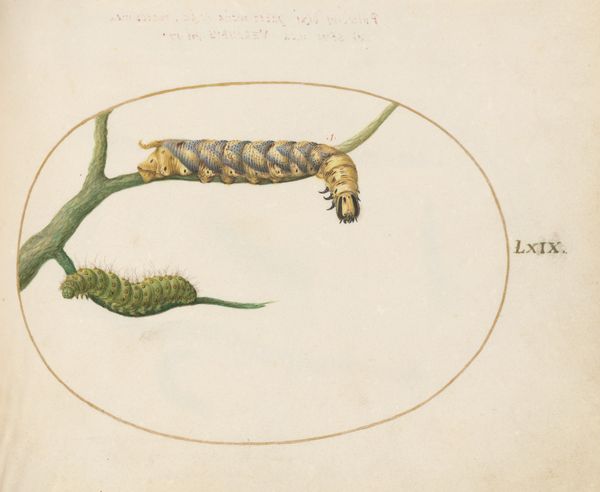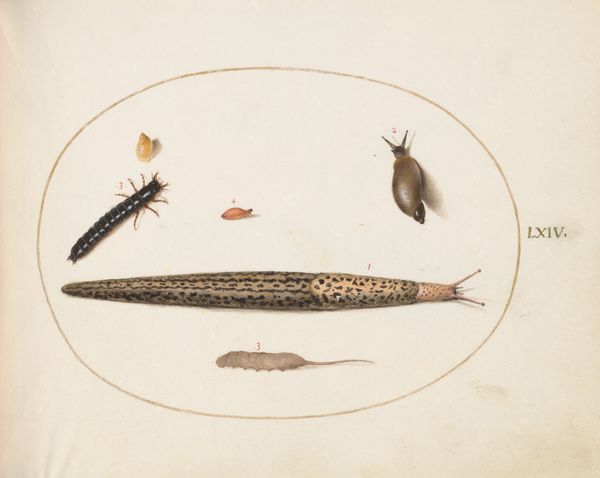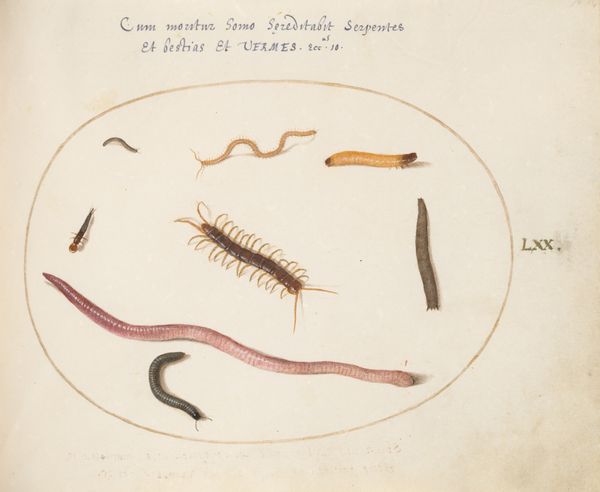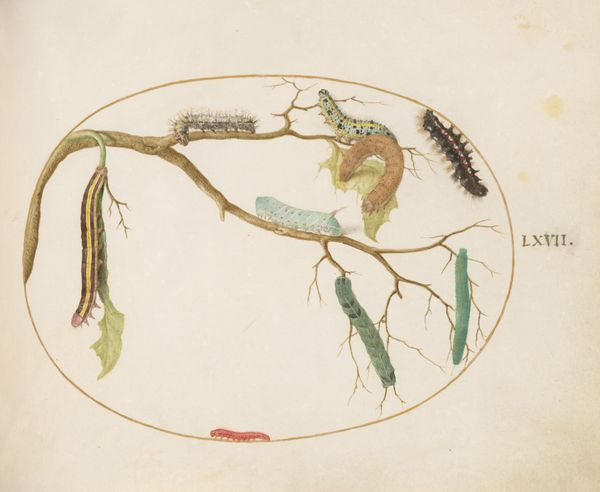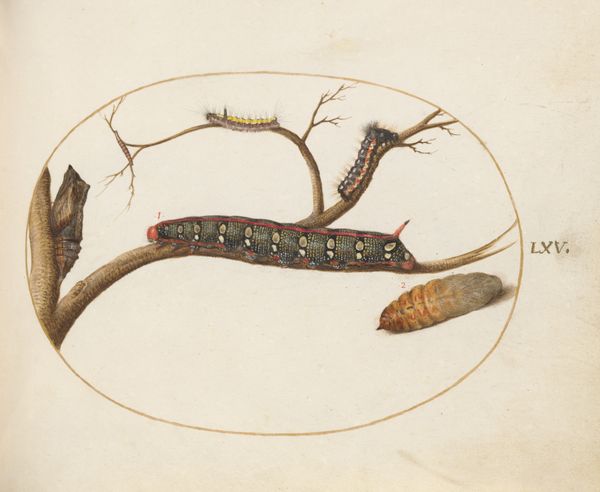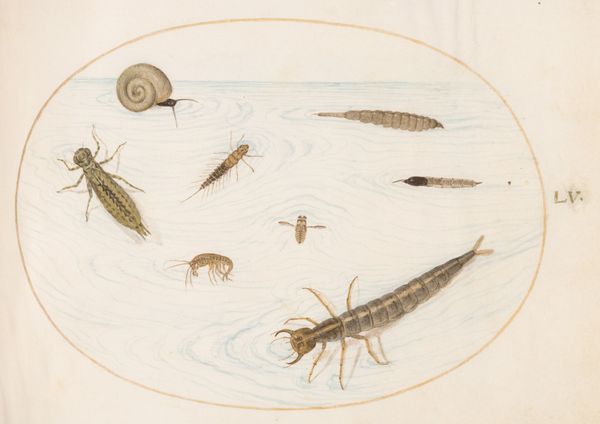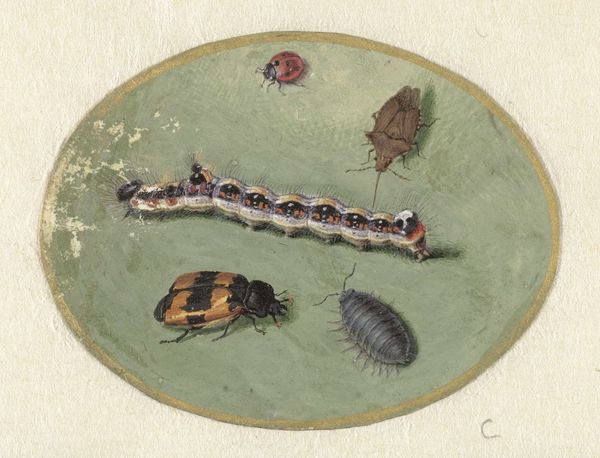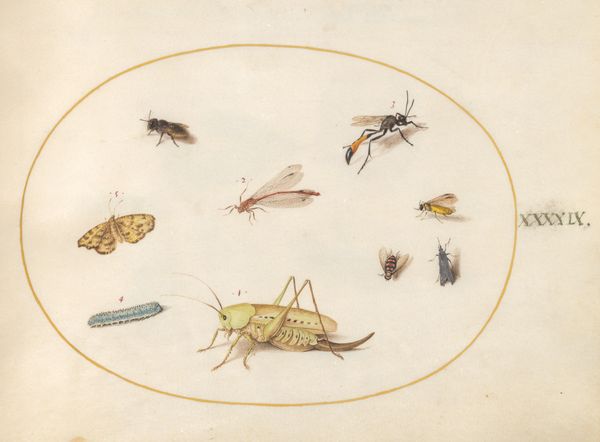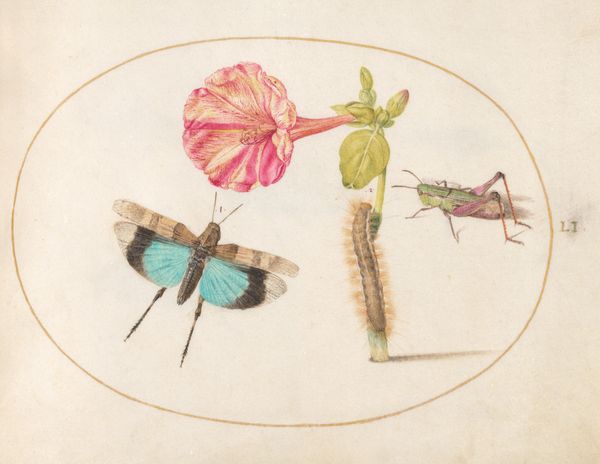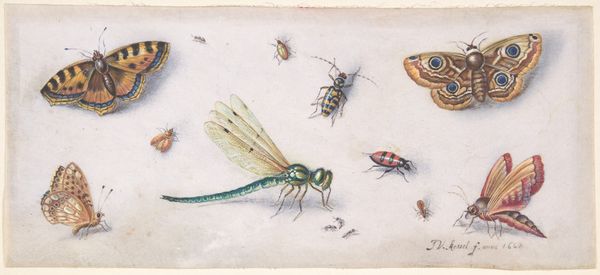
Plate 68: Leafy Spurge Hawkmoth Caterpillar, Mullein Moth Caterpillar, and Other Caterpillars c. 1575 - 1580
0:00
0:00
drawing, coloured-pencil
#
drawing
#
coloured-pencil
#
11_renaissance
#
coloured pencil
#
northern-renaissance
#
naturalism
#
miniature
Dimensions: page size (approximate): 14.3 x 18.4 cm (5 5/8 x 7 1/4 in.)
Copyright: National Gallery of Art: CC0 1.0
Editor: So, this is "Plate 68: Leafy Spurge Hawkmoth Caterpillar, Mullein Moth Caterpillar, and Other Caterpillars" by Joris Hoefnagel, dating back to somewhere between 1575 and 1580. It’s a drawing made with colored pencil. It’s got this sort of ring of different caterpillars. I'm struck by its precision, almost like a scientific illustration. What stands out to you about it? Curator: It’s a gorgeous example of Northern Renaissance naturalism, but I’m interested in the material conditions that produced such meticulous art. The availability of colored pencils at this time – think about the pigments, how they were sourced, and who controlled those resources. Were they created in workshops, under patronage? How would it affect the work if the pigments or materials had to be substituted or went out of production? Editor: That's an interesting perspective. I hadn't thought about where the materials would come from, beyond a generalized 'artist buys pencils' kind of idea. So, thinking about the consumption of such a piece, what was the art market for something so niche? Curator: Precisely! This wasn't mass-produced art. This miniature size, that level of detail suggests a specific patron, a collector perhaps interested in the natural world as a reflection of divine order, maybe an amateur naturalist or an apothecary needing detailed images of ingredients for medicinal recipes. Was there also value attributed to such representations of God’s creation beyond pure utilitarian value? Consider, also, that this is *hand* drawn. Editor: So, each mark, each shade, is an investment of time and skill... it really underscores the value placed on close observation and, ultimately, artistic labour. I never would have thought about the economics of art materials that way. Curator: And how these economic constraints influence the outcome and shape our understanding of this "scientific illustration". Editor: It changes my reading of the whole piece! It feels less like a detached observation and more like an active engagement with the materials and markets of its time. Thank you!
Comments
No comments
Be the first to comment and join the conversation on the ultimate creative platform.
